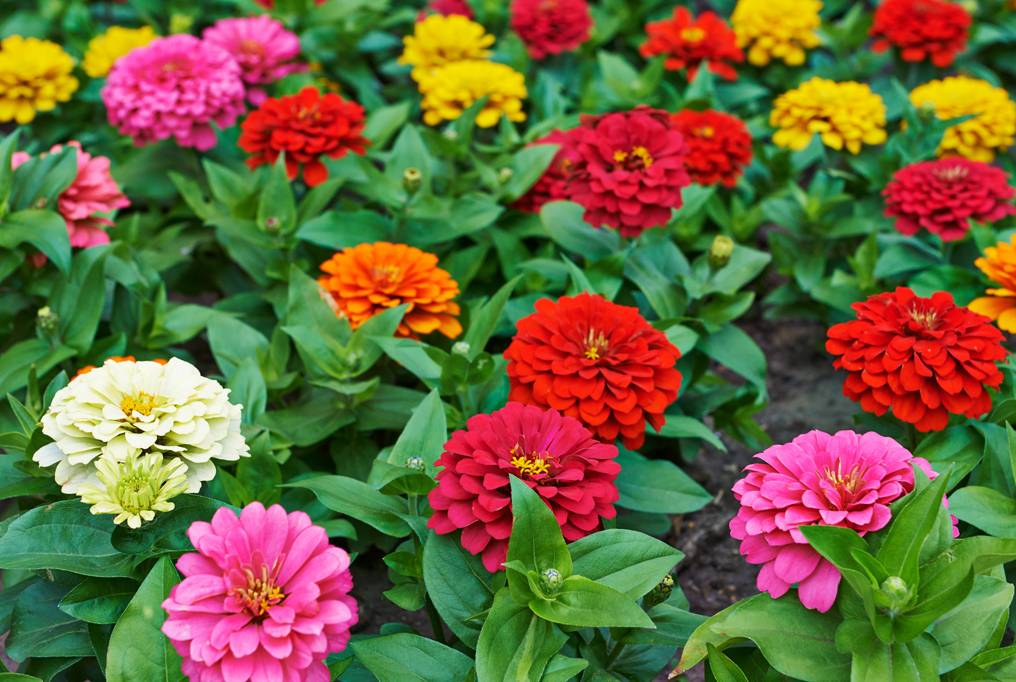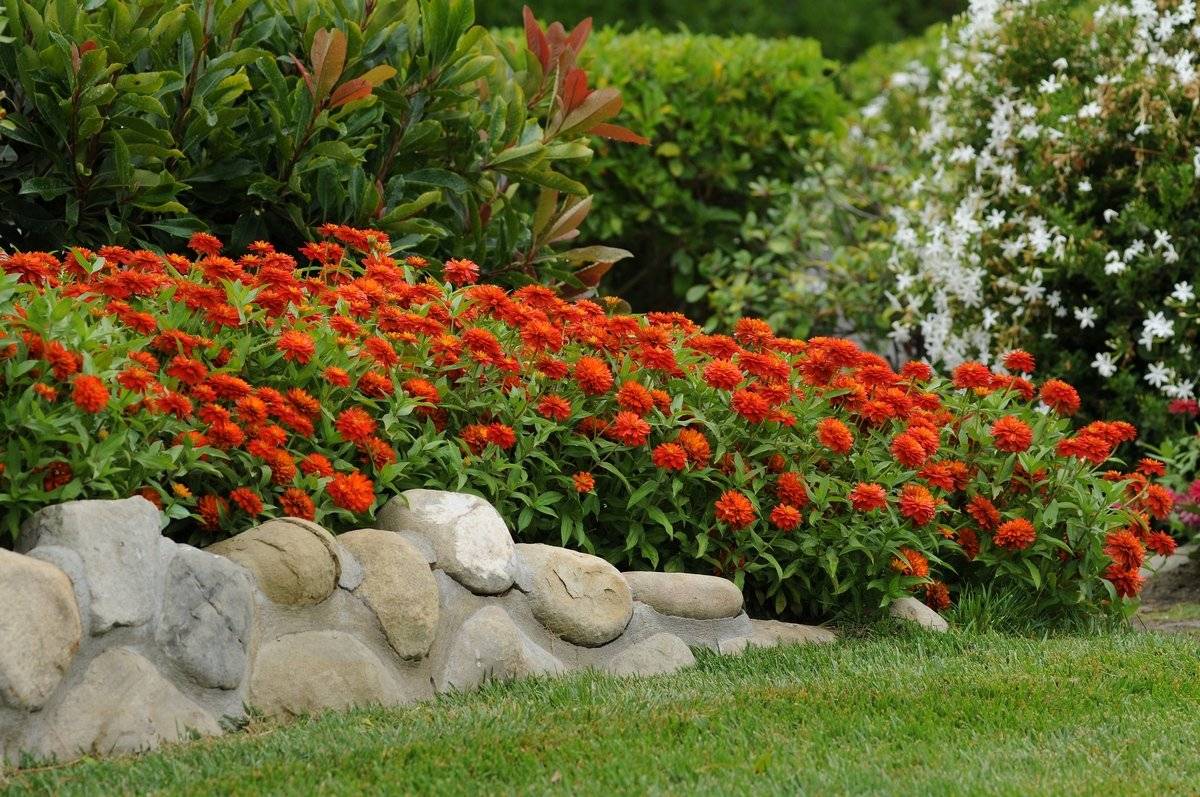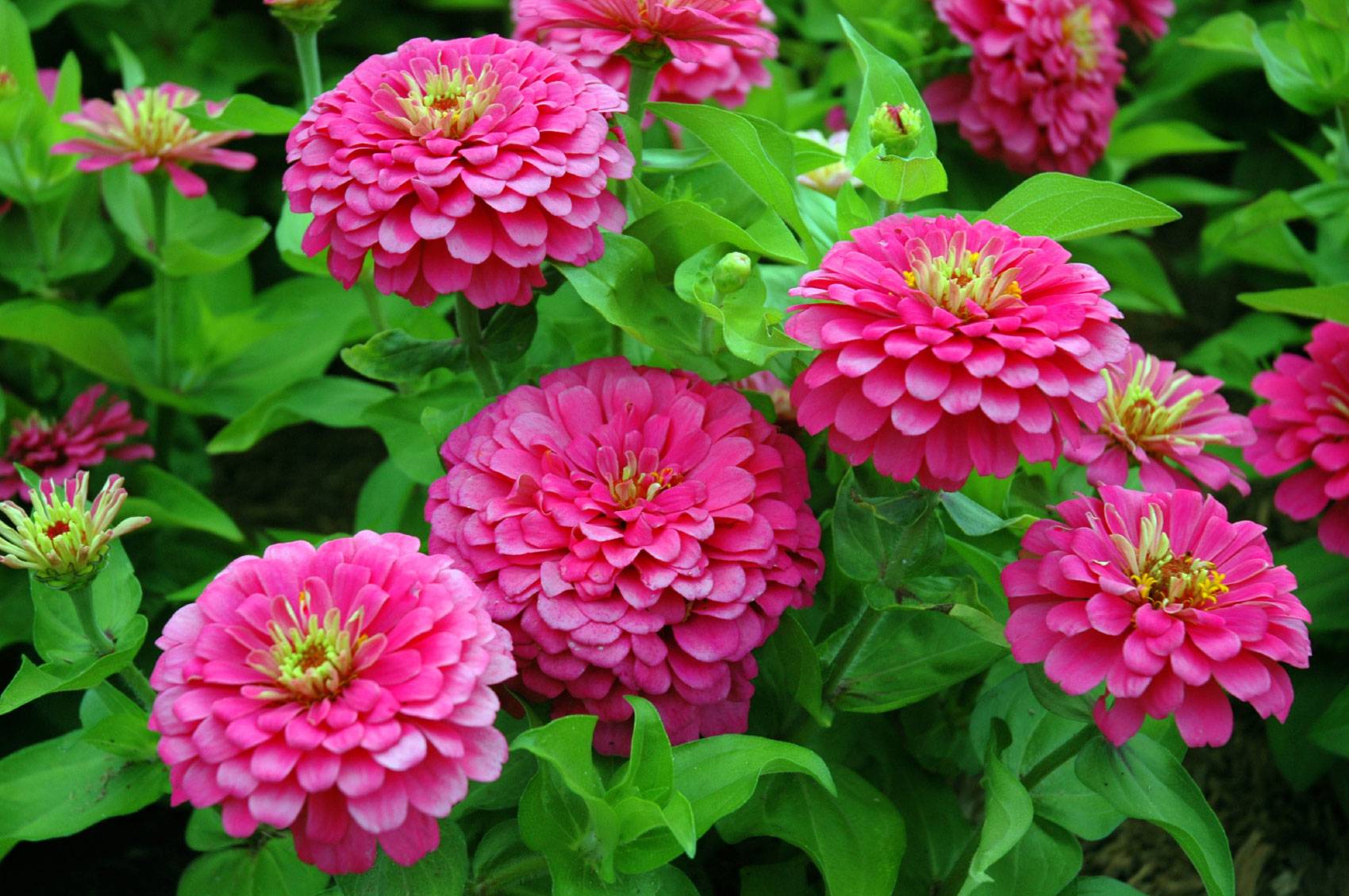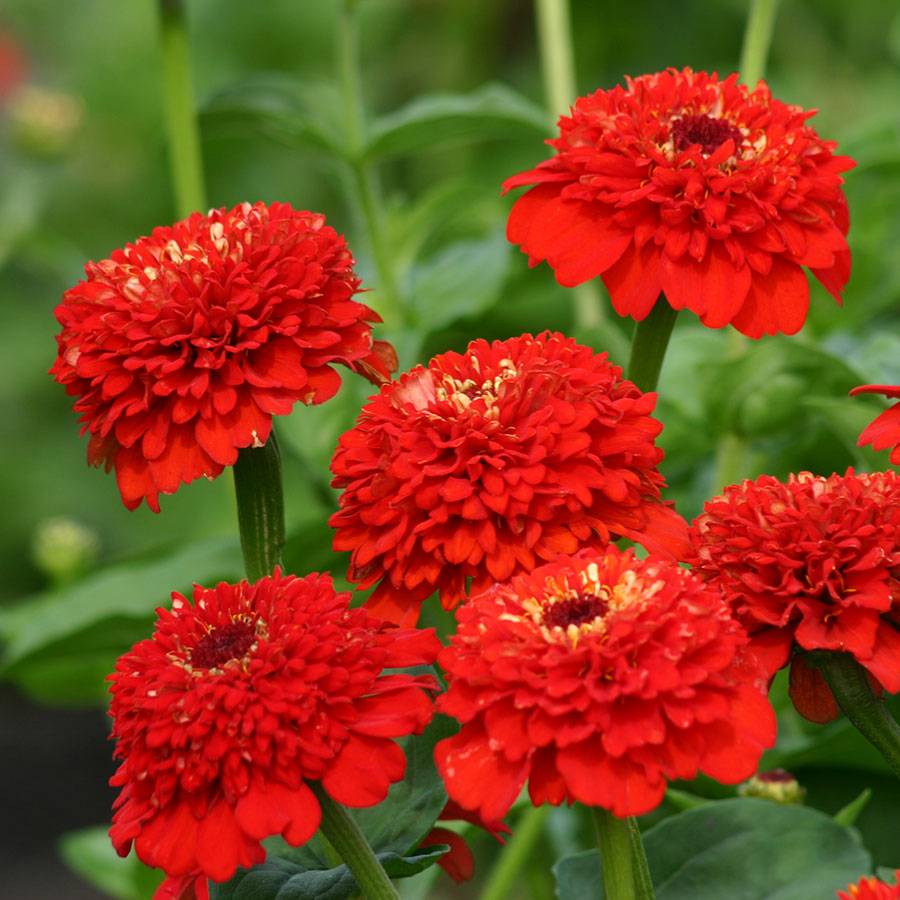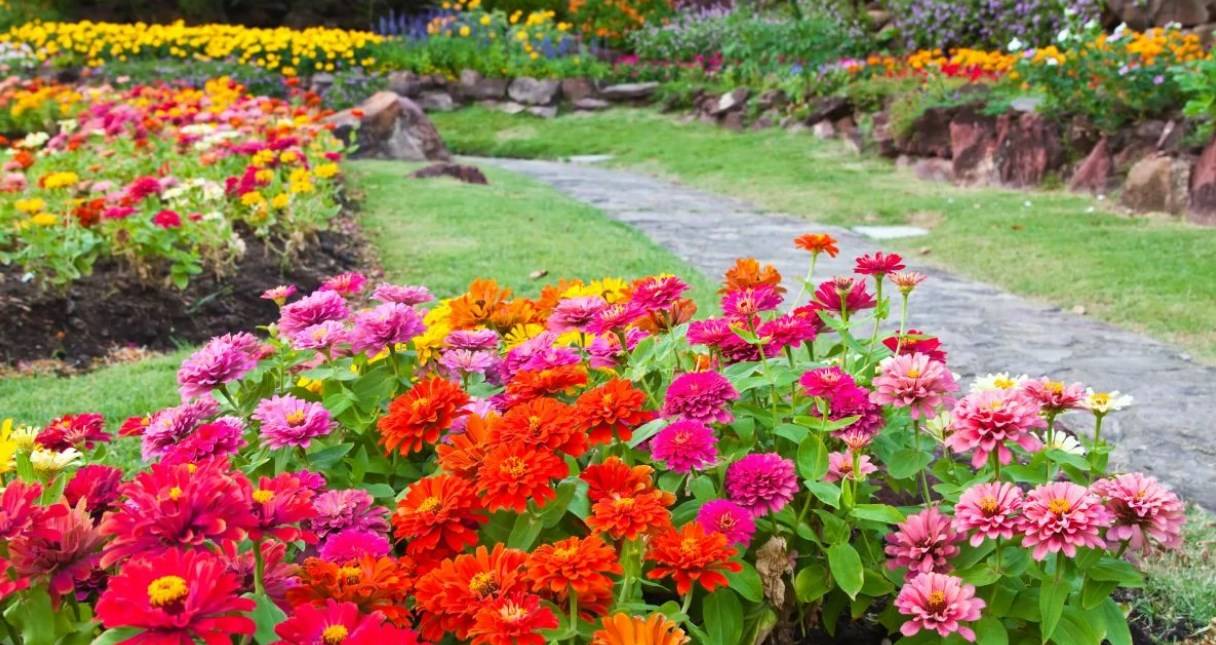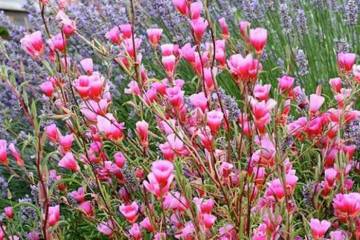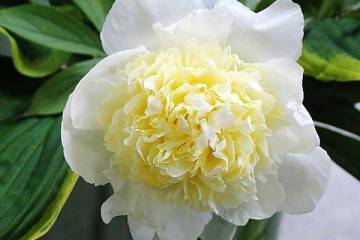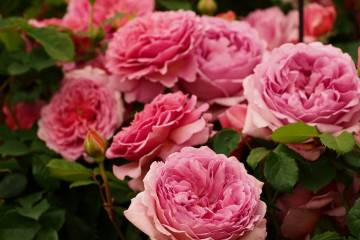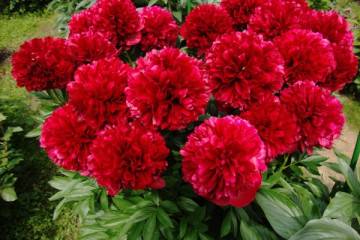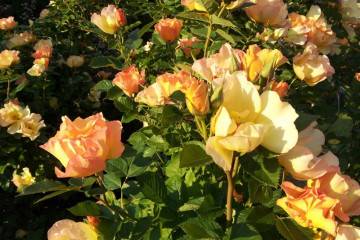Zinnia graceful (zinnia), height of a low-growing variety
Content:
Zinnia flower beds can create harmonious beauty in any garden and / or garden plot. The plant is unpretentious in care and cultivation, due to which it is in great demand among flower growers. Growing conditions also do not really matter.
Zinnia graceful (Zinnia elegans): description and characteristics
Zinnia is an annual shrub that belongs to the Astrovye family. In the wild, it grows in Central and South America. Perennial dwarf shrubs can also be found in nature.
Visually stunted zinnia is a small inflorescence on a long stem. The duration and splendor of flowering depends on the variety. At the end of the flowering period, seeds are formed in the place where the flower used to be.
The leaflets are ovoid, the apex is slightly pointed. There is a lot of foliage on the stem, it is located close to each other. Inflorescences are formed in the form of single baskets, which are rather large in size, located on thickened peduncles. Depending on the variety, the color of the petals can be lilac, yellow, cherry, red, purple, white and pink. After flowering, a fruit is formed in place of the flower.
In landscape design, annual species of zinnias are used, as well as narrow-leaved and graceful zinnias. With their help, they decorate arches and gazebos, decorate walls, planting flowers in decorative pots.
Use in landscape design
In landscape design, all varieties and varieties of plants are used. Most often they are planted for decorating large arrays and flower beds, and decorating bouquets. For example, zinnia Zakhara large-flowered is intended for creating summer compositions in combination with larger flowers.
Dahlia (dahlia-flowered) zinnia
Dahlia zinnia is a tall flowering crop that is grown in backyard plots to decorate rabat and flower beds. It goes well with dwarf and low-growing crops. Decorative rugs are often grown near flowers. Most domestic gardeners call him the real star of the front garden or flower garden.
Chrysanthemums
These terry zinnias belong to undersized varieties, they are used to decorate flower beds and flower beds. Often planted in containers for balconies. They have excellent indicators of resistance to drafts, gusts of wind.Subject to agrotechnical rules, flowering is continuous and long-lasting.
Pompom
These large-flowered plants look great in a group planting with miniature flowers. They can be the main decoration for flower beds and flower beds.
Fantasies
This variety of all listed is the least common. Mixes from this variety are used to decorate arches, gazebos and flower beds.
To create a beautiful composition, landscape designers recommend adhering to the following rules:
- gardeners often use this variety to separate vegetable beds;
- in combination with asters, chrysanthemum, marigolds, chamomile, bell and calendula, flowers look most advantageous;
- recommended for use in group plantings.
Other types of zinnias
There are still a huge number of varieties of zinnias, which are willingly planted in Russian household plots.
Narrow-leaved zinnia
This variety is endemic to Mexico. Main characteristic features:
- blooms from the second half of June to the end of September;
- annual flowering culture;
- the petals are bright orange with a red border;
- plant height does not exceed half a meter;
- in a circle the diameter of the inflorescences does not exceed 4 cm.
The most popular varieties are Persian Carpet and Gloriendshine.
Fine-colored, or Linearis
The main features of the variety of zinnia yellow:
- plant height reaches half a meter;
- the bush is formed of compact size, the stems are thin and erect, a slightly reddish tint is characteristic;
- inflorescences of miniature size, no more than 3 cm in diameter.
Popular varieties of low-growing zinnias
As mentioned earlier, undersized zinnias are used to decorate borders. There are an incredible variety of varieties.
Zinnia Lilliput
The bush is formed of compact size, the height does not exceed 0.5 m. The erect stems are covered with small leaves, the inflorescences are also small. Visually, in their shape, they resemble small pom-poms, therefore this variety is sometimes also called pom-pom.
Zinnia Little Red Riding Hood (Rotcopchen)
This flowering crop is a low-growing annual shrub with the following varietal characteristics:
- the surface of the petals is densely double, have a cherry or deep red hue;
- the culture blooms magnificently and for a long time (subject to agrotechnical rules);
- the height of the bush does not exceed 20 cm;
- the circumference of the open flowers is about 4 cm.
Zinnias Tom-Thumb
Tom-Thumb has the following characteristics:
- the plant is formed in the form of a compact bush, the height is no more than 30 cm;
- leaves are very close to each other;
- the petals have a rich scarlet color, but burn out under the scorching sun;
- inflorescences are slightly flat in shape.
Subject to the rules of agricultural technology, the culture blooms from the end of June to the end of September.
Zinnia Short Staff
This variety is considered the shortest in comparison with other representatives of the species. Differs in the following characteristics:
- the color of the petals can be white, red, coral and cherry;
- the bushes reach no more than 20 cm in height;
- the circumference of the inflorescences is about 10 cm;
- a large number of inflorescences are formed on the stems.
The use of undersized bush zinnias for decorative purposes
Most landscape designers use low-growing varieties of flowering plants when decorating their homesteads, as they help the picture to become more complete. Most of the undersized zinnias are used to decorate rockeries, rabatoks, rock gardens, borders, mixborders and various flower beds.
Zinnia graceful: features of growing in a garden
The culture is warm and light-loving, this must be taken into account when choosing a site for planting. The first frosts can have an extremely negative effect on the health of the plant, therefore, to prevent this from happening, you must first and correctly prepare the soil substrate. It is enriched with various nutrients. Having chosen a place for landing, they dig it up. Further, nitroammophoska, potassium sulfate and superphosphate are added to the soil in equal proportions.
The site must be protected from sudden gusts of wind, the plant still does not tolerate excess moisture, and drought also negatively affects. Watering should be regular and moderate as the soil dries up.
Reproduction is carried out by seed. Seed is harvested at the end of the flowering period. It is possible to plant in open soil only with the arrival of heat, when the earth is warmed up.
Some gardeners wonder why zinnia has small flowers. The answer is quite simple, this is a feature of this culture. To grow it on a personal plot or in a garden is within the power of every florist, even a beginner. The main task is to follow the minimum agrotechnical requirements.
